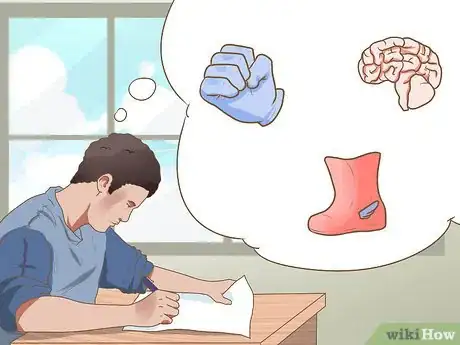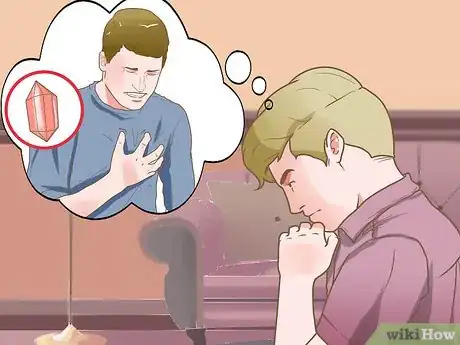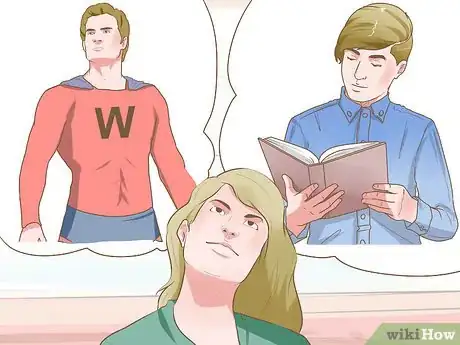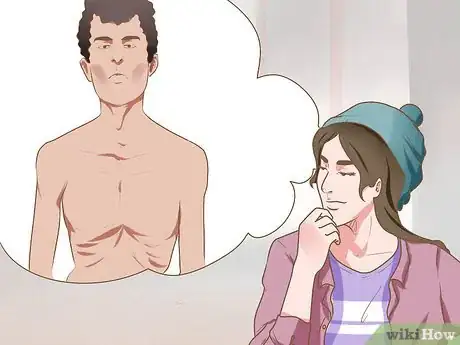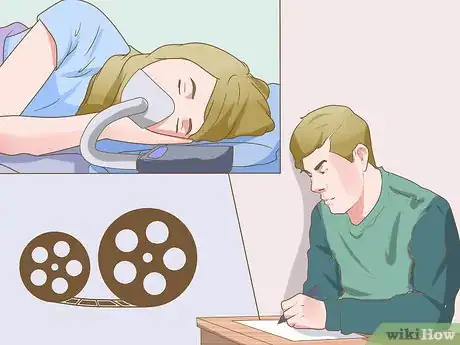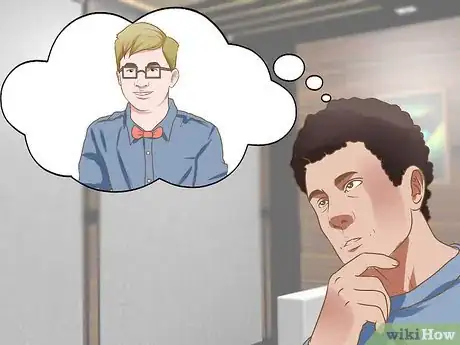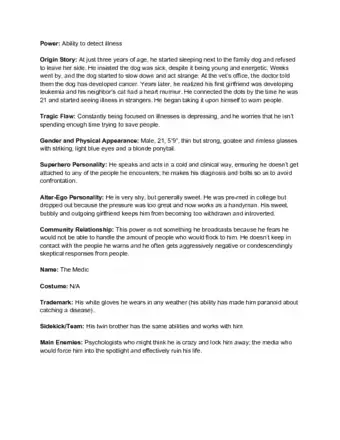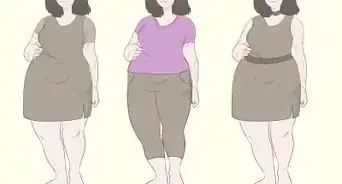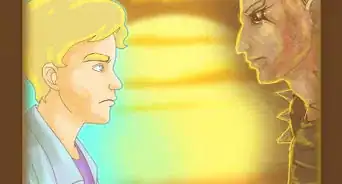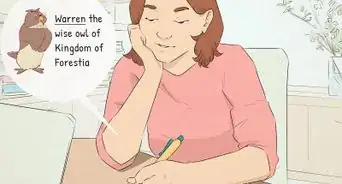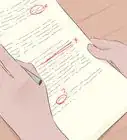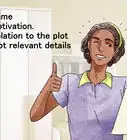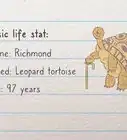This article was co-authored by Melessa Sargent. Melessa Sargent is the President of Scriptwriters Network, a non-profit organization that brings in entertainment professionals to teach the art and business of script writing for TV, features and new media. The Network serves its members by providing educational programming, developing access and opportunity through alliances with industry professionals, and furthering the cause and quality of writing in the entertainment industry. Under Melessa's leadership, SWN has won numbers awards including the Los Angeles Award from 2014 through 2021, and the Innovation & Excellence award in 2020.
There are 7 references cited in this article, which can be found at the bottom of the page.
wikiHow marks an article as reader-approved once it receives enough positive feedback. This article has 43 testimonials from our readers, earning it our reader-approved status.
This article has been viewed 1,157,395 times.
Have you ever wanted to create the next Spider-man, Superman, or Batman? Creating a superhero can be a fun way to build a story and a character to write about. Even if you only have a few ideas at first, you can take those small ideas and make them into something great.
Steps
Choosing Your Superhero’s Traits
-
1Choose your superhero’s powers. Since super heroes are generally identified by their powers, it makes perfect sense to think of the powers first and then shape the character to fit them. A huge number of superpowers have already been claimed by other characters, so try to come up with something unique.
- Consider giving the hero multiple powers, like flight and super strength. A mix of powers might help differentiate your new hero from other ones that already exist.
- Some superheroes don’t have supernatural powers and instead rely on gadgets and training, like Batman and Black Widow. Their dedication commands respect, but also makes them more vulnerable—and possibly more interesting.
-
2Give your superhero a tragic flaw or weakness. A tragic or “fatal” flaw is essentially a character trait or quality that your hero grapples with on a regular basis. An invulnerable hero can get old fast. By giving him or her a fatal weakness, you make battles more interesting and make fans more invested in the character.[1]
- For example, Superman's weakness is kryptonite, while Batman’s tragic flaw is his obsession with seeking justice after seeing his parents murdered. Flaws or weaknesses can be emotional, psychological, or physical.
Advertisement -
3Flesh out your character’s personalities. Your super hero might have two separate identities: his everyday identity, and his hero identity. These two lives might entail separate personalities and traits. Work out what traits your hero possess in each form.[2]
- Consider diving your superhero an alter ego, (i.e. Superman and Clark Kent). This can add dimension and make your character more interesting to readers.[3]
-
4Avoid copying other existing characters. It’s doubtful you’ll be able to find traits or powers that haven’t already been taken by someone somewhere, so just be sure to tweak it enough that you don’t directly rip off another character.
- For example, if you want to give your hero Superman’s powers, give him a different name and a different backstory. That way, your hero is different and original.
-
5Try making your hero different from other superheroes. If you’re creating your own superhero, you are probably pretty familiar with the standard traits and qualities of popular superheroes. Rather than making yours just like the ones that already exist, break the mold and try to be original. Give your hero a unique combination of powers or traits.
- You can be original in all aspects of creating your superhero. Maybe their power puts them at a disadvantage, or maybe they are too scared to use their powers.
- Use popular superhero characters as reference points. When you think of a traditional hero, what comes to mind? How can you make your hero different from these tropes?
Building Your Superhero’s Background
-
1Come up with a backstory for your hero. In the superhero world, backstories are often called origin stories. They offer insight into the life your hero had before he really became a hero, and even how he became one. This story will give us a look into the more “human” side of your hero, and make him a more sympathetic and relatable character.[4]
- Many superheroes have experienced tragedies that inspired and motivated them to enforce and serve justice. For example, Bruce Wayne wants to serve justice because he saw his parents murdered.
- Conflict and inner-turmoil can help shape the character and their story. When coming up with their backstory, think about conflicts or problems they may have faced that shaped them into the hero they are now.
-
2Think about how the superhero’s powers evolved. Once you’ve determined your hero’s backstory, you know whether or not he was born with the powers he has, or if he came into them later in life. Deciding how he discovered or came into his powers is an important part of his story and who he is.
- Consider some questions: what was their initial reaction to their abilities? Are they necessary for survival? How often do they use their powers, and are they proud or ashamed of them?
- Make the superpowers a journey in and of themselves. A character who has a static relationship to their own abilities won’t generate a lot of interest. Some trial and error, or even some internal conflict with how to use the powers are both good options.
-
3Determine the community’s relationship to the character. Some superheroes are disliked or feared by the communities they exist within. Batman and Spider-Man, for example, were both seen as menaces initially, before the community came to see them as helpful. Decide what kind of relationship you want your hero to have with his community.
- Anti-heroes, like Deadpool, are loved by many audiences, even if they are disliked or feared in their comics or movies. This approach could be a fun experiment in storytelling and character evolution.
-
4Create rivals or enemies for your hero. Any good superhero needs a villain or two to fight against. Flesh out the enemies the same way you did the superhero. However, don’t answer too many questions about the villains right off the bat. Taking time to reveal their backstories, true natures, and motivations will make them more engaging and mysterious.
- The villain’s backstory could tie in with the superhero’s, even if the hero doesn’t know it. They can find out about the connection as their story unfolds. This can add new layers to the story and the characters.
- People love a good villain and are interested in their backstory, whether it’s to place blame or to understand their motivations. Great examples include the Joker and Loki.[5]
- When creating your villain, consider making him the opposite of your hero. For example, his superpower could conflict with your hero's power. This will give the two a reason to be at odds.
Designing Your Superhero’s Image
-
1Choose a gender and body type for your superhero. Superheroes come in all shapes, sizes, and genders. Some are not even human at all. Decide on the physical traits of your superhero. The superpowers you have chosen might even help you determine the character’s physicality.
- Consider some questions: is your character a tank? Would a lithe and lanky build be more appropriate? Is the power gender-specific?
-
2Design a costume for your superhero. Make sure the colors, style, and accessories are all appropriate to both the character’s powers and personality. Consider the central weapons your hero might rely on, and if your hero might have a signature weapon they created and use.
- Think about what certain colors often imply. For example, white can imply innocence, while black might be more associated with darkness or evil.[6]
-
3Give your superhero a trademark. A symbol or logo, for example, makes superheroes more memorable and helps make their costumes complete. Think of the big “S” on Superman’s chest, and the skull painted on the Punisher’s shirt. A catchphrase might also be useful, but remember to make it catchy, not long or cheesy.
- If it’s appropriate for the character’s power, consider giving them a trademark pose, weapon, vehicle, or other tool. Be sure to name these items and give them a special place in the story arc.
-
4Name your superhero. The name of your superhero will essentially be the “hook” for getting people interested. Of course, it’s the stories and character traits that make people love the superheroes, but it’s their names that are memorable and make the reader interested in the first place.
- Try different naming techniques. There’s the noun + noun technique, in which you use two nouns and make a compound word, like Spider-Man. Or, you can try the adjective + noun technique, like in Superman and Black Widow.[7]
- A name can have something to do with the hero’s powers, their personality, or who they are. Since you’ve already thought out their origin story and what powers they have, these things should help you come up with a good name.
-
5Decide if you want to give your hero a sidekick. Also, you might consider making your hero part of a team. Think of well-known teams and pairings like the X-Men, Justice League, and Avengers. They often come together as a team, but also have separate stories of their own.
- Develop the sidekick/team the same way that you’ve developed the superhero thus far, then create a backstory as to how they met or came together.
- Consider these questions: is the sidekick useful or do they make lots of mistakes? Were they once enemies? Were they scarred by the same event?
Sample Superhero Profiles
Expert Q&A
-
QuestionWhat makes someone a super hero?
 Melessa SargentMelessa Sargent is the President of Scriptwriters Network, a non-profit organization that brings in entertainment professionals to teach the art and business of script writing for TV, features and new media. The Network serves its members by providing educational programming, developing access and opportunity through alliances with industry professionals, and furthering the cause and quality of writing in the entertainment industry. Under Melessa's leadership, SWN has won numbers awards including the Los Angeles Award from 2014 through 2021, and the Innovation & Excellence award in 2020.
Melessa SargentMelessa Sargent is the President of Scriptwriters Network, a non-profit organization that brings in entertainment professionals to teach the art and business of script writing for TV, features and new media. The Network serves its members by providing educational programming, developing access and opportunity through alliances with industry professionals, and furthering the cause and quality of writing in the entertainment industry. Under Melessa's leadership, SWN has won numbers awards including the Los Angeles Award from 2014 through 2021, and the Innovation & Excellence award in 2020.
Professional Writer A super hero is just anyone who helps and assists others without putting an emphasis on their own safety and well being. There are plenty of everyday super heroes who don't wear masks or capes!
A super hero is just anyone who helps and assists others without putting an emphasis on their own safety and well being. There are plenty of everyday super heroes who don't wear masks or capes! -
QuestionWhere can I get inspiration for a super hero?
 Melessa SargentMelessa Sargent is the President of Scriptwriters Network, a non-profit organization that brings in entertainment professionals to teach the art and business of script writing for TV, features and new media. The Network serves its members by providing educational programming, developing access and opportunity through alliances with industry professionals, and furthering the cause and quality of writing in the entertainment industry. Under Melessa's leadership, SWN has won numbers awards including the Los Angeles Award from 2014 through 2021, and the Innovation & Excellence award in 2020.
Melessa SargentMelessa Sargent is the President of Scriptwriters Network, a non-profit organization that brings in entertainment professionals to teach the art and business of script writing for TV, features and new media. The Network serves its members by providing educational programming, developing access and opportunity through alliances with industry professionals, and furthering the cause and quality of writing in the entertainment industry. Under Melessa's leadership, SWN has won numbers awards including the Los Angeles Award from 2014 through 2021, and the Innovation & Excellence award in 2020.
Professional Writer Think about something you've always wanted to do to help people but can't because it would put you in harm's way. You can always look for real-world examples of people who help others and then add one or two different elements to make them "super."
Think about something you've always wanted to do to help people but can't because it would put you in harm's way. You can always look for real-world examples of people who help others and then add one or two different elements to make them "super." -
QuestionDoes it seem awkward if your hero's weakness is the sight of seeing people getting hurt?
 Avid LepidopteristCommunity AnswerNo. This could also be their "core drive." Maybe the hero wants to be heroic, because they don't want anyone getting hurt!
Avid LepidopteristCommunity AnswerNo. This could also be their "core drive." Maybe the hero wants to be heroic, because they don't want anyone getting hurt!
Warnings
- The word “superhero” is trademarked, so if you use it in the title of your comic book about your superhero, you won’t be able to sell that book for profit.⧼thumbs_response⧽
- Don't make your OC overpowered like Thor. Try to create a few powers and weakness instead of adding too many powers or no weakness. Lots of superheroes aren't like gods. (Thor is a god however)⧼thumbs_response⧽
References
- ↑ http://tvtropes.org/pmwiki/pmwiki.php/Main/FatalFlaw
- ↑ http://personalitygrowth.com/myers-briggs-mbti-dc-superhero-character-types/
- ↑ http://xroads.virginia.edu/~ug02/superman/double.html
- ↑ https://neilchasefilm.com/relatable-characters/
- ↑ http://www.wired.com/2012/07/why-do-supervillains-fascinate-us/
- ↑ http://comicsalliance.com/colourlovers-comic-colors-infographic/
- ↑ https://www.adazing.com/superhero-name-generator/
About This Article
To create a superhero, start by choosing what powers your superhero will have, like flight or super strength. You should also give your superhero a weakness or flaw to make them more interesting. Next, come up with a backstory for your superhero that explains how they get their powers. You can also include a villain or enemy in their backstory so your superhero has someone to fight against. Finally, come up with a costume for your superhero and give them a cool, memorable name. To learn how to come up with a costume for your superhero, scroll down!
